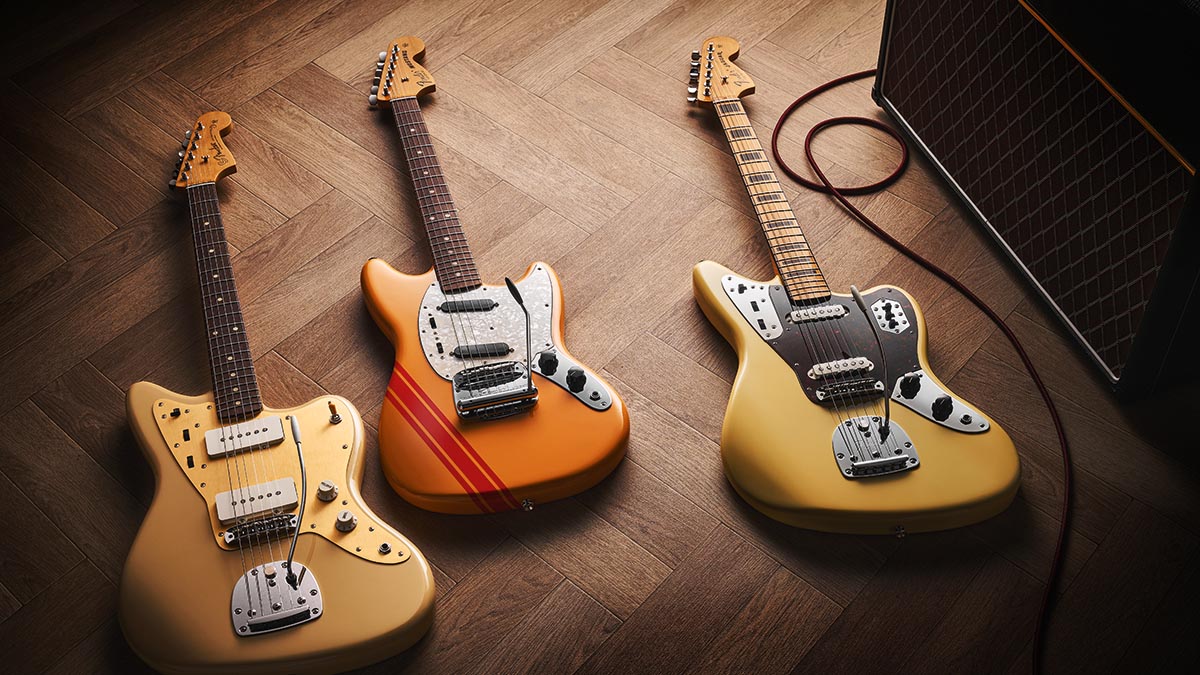
The second collection of affordable vintage-era Fenders, the Vintera II range, was introduced last year and to say we were impressed with the ’50s Nocaster/Telecaster and ’60s Stratocaster we reviewed is an understatement. But could we get our hands on the new trendy offset guitars? Not until now.
While the first wave of Vintera offsets centred on the ’60s, the second wave jumps either side with the ’50s Jazzmaster and ’70s incarnations of the Jaguar and Mustang and – as we reported in that previous review – style aside, the primary changes are the switch back to rosewood fingerboards from pau ferro, a pickup upgrade across all the models and, yes, a slight price increase.
Viewed today, it’s quite remarkable how these offsets are not only cohesive designs but how different they are in looks, feel and sound, too. Plus, although we have a ’50s Jazzmaster alongside a ’70s Jaguar and Mustang, we’re not comparing different decades or styles of manufacturing – a leveller that makes a contemporary comparison of ‘vintage’ Fender designs that much more interesting.
Basic Style
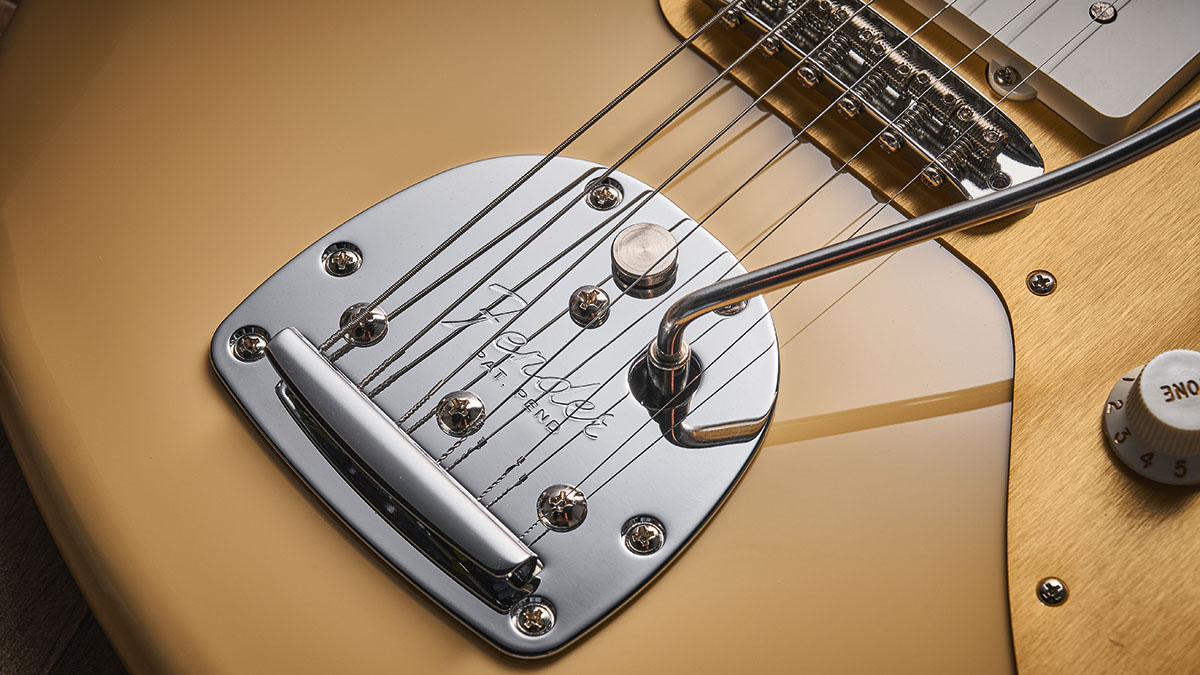
So, while the Jazzmaster retains the classic ‘long’ Fender scale length of 648mm (25.5 inches) and fret complement of the Telecaster and Stratocaster, the Jaguar and Mustang both drop down to a shorter 610mm (24-inch) scale with an extra 22nd fret. It’s a fundamental change that noticeably affects both the feel and sound, and aside from copies, we can’t recall any other-brand electric guitars that use this scale length today.
Historically, of course, the Mustang was also originally offered with the even shorter 572mm (22.5-inch) scale like the single-pickup Musicmaster and dual-pickup Duo-Sonic, although from the introduction of the Mustang in 1964 those models were also offered with the longer 610mm scale.

Both the Jazzmaster and Jaguar, of course, share the same body outline, which is 42mm thick with its classic smoothly domed forearm contour, ribcage scoop and large edge radius. We can’t see any wood – or how many pieces are used – through the opaque finishes of either.
The Mustang scrapes into the offset category courtesy of its waist and slightly offset base, and is slightly thinner in depth, closer to 39mm, again with the heavily radiused edges, lighter contouring and those more, well, Fender-like body horns.
Viewed today, it’s quite remarkable how different these offsets are in looks, feel and sound
It’s little surprise, then, that the Mustang is the lightest of our trio at 3.66kg (8.05lb); the ’50s Jazzmaster is only a little heavier at 3.78kg (8.32lb) and, although the same shape, the ’70s Jaguar tops out at 4.04kg (8.89lb), something that actually reflects – we’re sure unintentionally – the often lighter stock used in the 50s as opposed to the often heavier wood of that later period. If weight bothers you, it’s worth checking.
Obviously, as era-correct replications there’s no modern fashionable rounding of the body heel (it’s square edged), and all use the classic neckplate and four-screw attachment. The actual neck pockets appear pretty tight fitting, too. To be picky, there’s some slight sideways movement of the neck on the Jaguar, but that’s fixed with a quick tightening of those screws.

Neck Work
We’d expect all the maple necks here to be slab-sawn where the end grain is parallel to the headstock face. In fact, both the Jazzmaster’s and Mustang’s end grain is diagonal, what Fender calls ‘rift sawn’. Aside from the slightly larger ’70s headstocks here, both the rosewood ’boards are slab-style and unbound, unlike the black-bound maple of the ’70s Jaguar with its large black plastic block inlays.
Interestingly, the Mustang’s dots are slightly larger in diameter than the Jazzmaster’s, and the dual 12th-fret dots are placed slightly closer together. All three use the original ‘small’ fingerboard radius of 184mm (7.25 inches), each has body-end truss rod adjustment, and each uses the same narrow-tall fretwire.
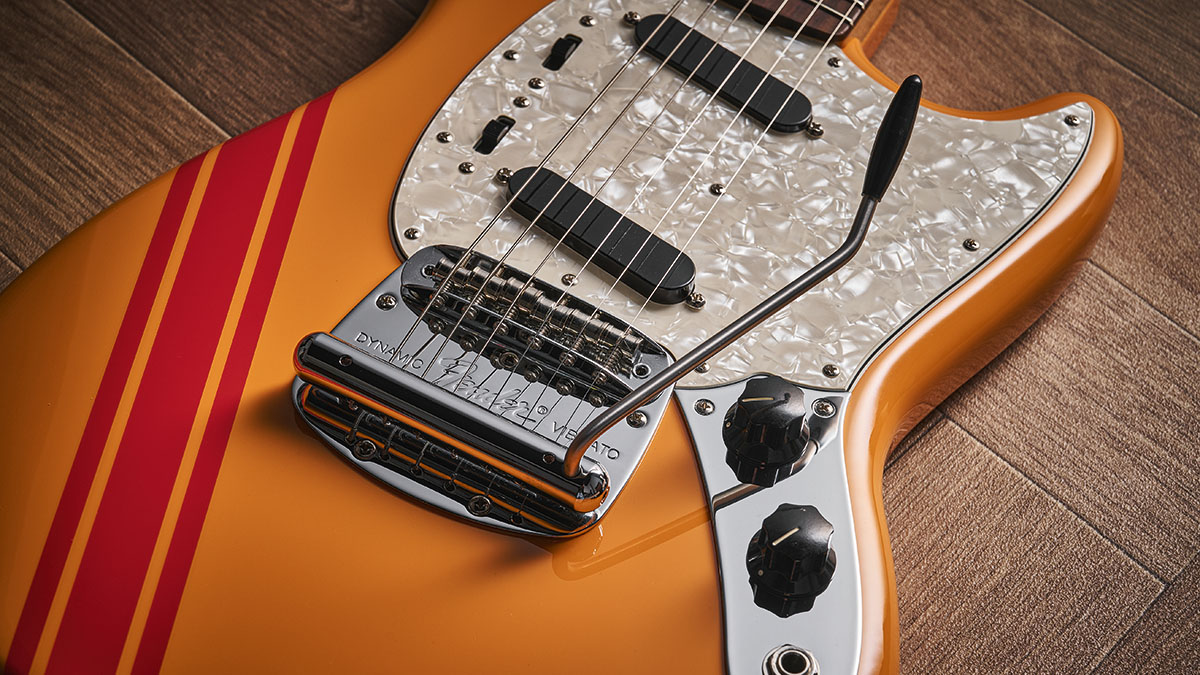
Our three guitars advertise slightly different neck profiles – and dimensionally, though close, reflect some very subtle differences. Still, probably due to the lightly tinted polyurethane gloss of the neck back, there’s more commonality than you might think.
The narrow tall fretwire (measured at 2.08mm wide by 1.09mm high) isn’t particularly high, but the maple ’board of the Jaguar avoids that almost ‘fretless wonder’ feel of many from that period.
Metalwork
Probably the most polarising aspect of the Fender offset is the bridge and separate vibrato of the Jazzmaster and Jaguar. Today, there’s a whole industry of aftermarket ‘fixes’ for the original designs and there are plenty of tricks in terms of how you can set them up.
We can easily debate the failings of the original design, but for many players that’s precisely the draw: the otherworldly resonance of the strings behind the bridge and the ability to bend them with some swoops from the light-feeling vibrato.
The Jazzmaster’s mix sound is probably worth the experience on its own – the high-end detail transports us back in time in glorious fashion
The lack of mass of the Jazzmaster/Jaguar bridge also plays its part in the offset sound here and many players actually prefer the sound and performance of the Mustang’s saddles, which aren’t individually height adjustable: the domed radius is created as the E-string pair has the smallest diameter, the G and D string pair the largest, with the B and A pair in between.
These saddles also have quite a deep groove to hold the string more firmly in place. Then there’s the vibrato’s large string anchor block, which also provides more mass.

The ‘trem-stop’ of the Jazzmaster/Jaguar bridge, when set correctly, will prevent up-bend and also keep you in-tune (ish) should you break a string. The arms simply push-fit, whereas on the Mustang vibrato you can set the swing tension of the Mustang’s arm, thanks to a small Allen key, or lock it in place.
None of the three bridges is fixed to the body, either. To allow them to ‘rock’ as the vibrato is moved, each has two legs that sit in circular metal ferrules sunk into the body and pivot on a sharp pointed screw that passes through each of those legs.
Each of our trio also uses split-post tuners, the 70s models with the ‘F’ logo backs, while the Mustang’s have plastic buttons. They use a single ‘butterfly’ string retainer on the top two strings, although, oddly, there’s no spacer on the Mustang’s tree, which means those top strings are pulled down behind the nut at a much steeper angle.
Control Chaos

The Jazzmaster introduced the dual ‘rhythm’ and ‘lead’ circuit concept that has befuddled us guitarists for the past 66 years. It is, in fact, not that complicated and can be quite useful.
The key lies with that two-position slide switch at the top tip of the one-piece scratchplate: pushing it in towards the neck you have the ‘lead’ circuit where the three-way toggle selects either or both pickups, and the volume and tone work as we all know.
Easy. Move that slide switch away from the neck and you introduce the ‘rhythm’ circuit: the neck pickup only with its two thumb-wheel controls for volume (the upper wheel) and tone.
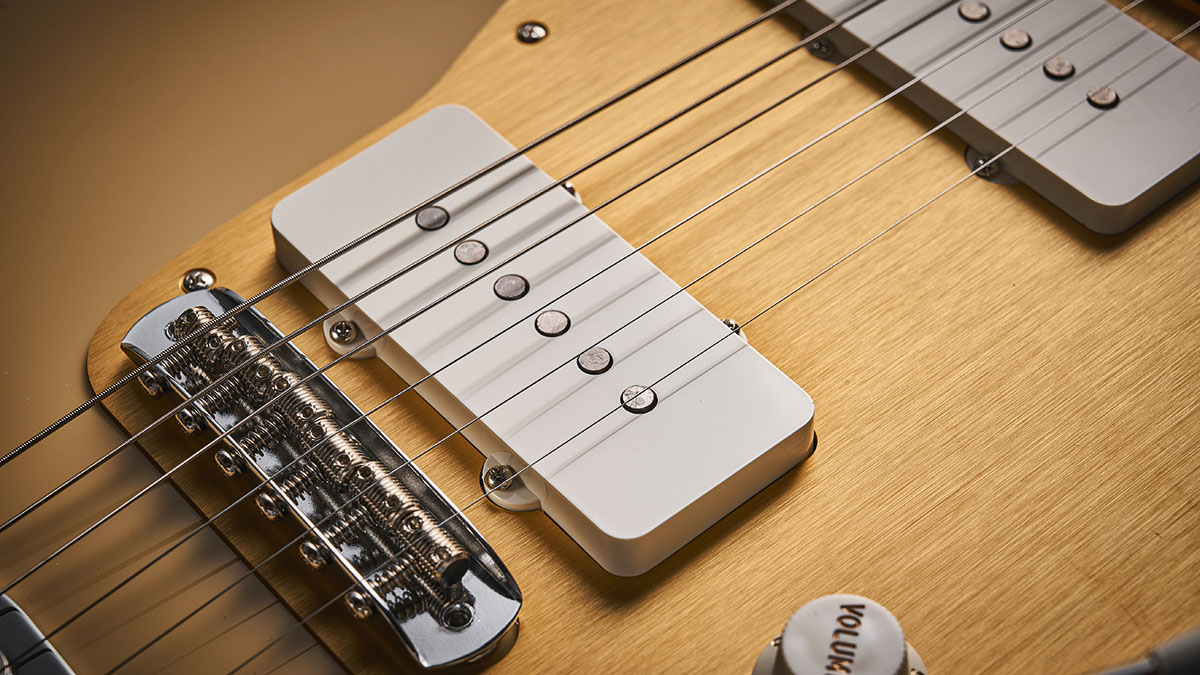
The later Jaguar uses pretty much the same dual-circuit concept, but instead of the lead circuit’s toggle switch we get individual pickup on/off switches and the lower-placed ‘strangle’ switch, effectively a high-pass filter that attenuates the low-end.
It also introduces the four-piece scratchplate where both circuits’ controls are mounted on chrome-covered metal plates, as are those three lead circuit slide switches, leaving the more central piece as a plastic laminate.
Style over substance? Well, the Jaguar’s metal control plates do mean it’s easy to investigate any wiring issues without removing the entire scratchplate and bridge as on the Jazzmaster, plus experiments with things such as capacitor types and values is loads easier. Something to bear in mind if you like to tinker.
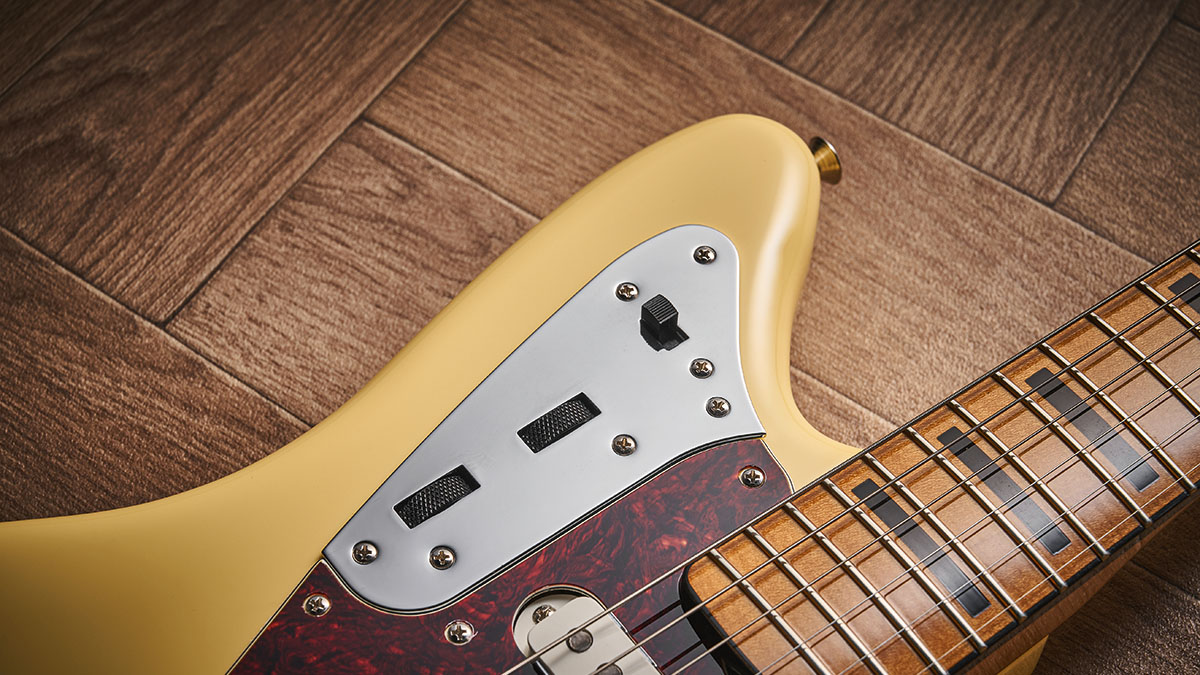
Our Mustang has just one circuit and is the epitome of Leo Fender’s modular approach to guitar manufacturing. Unlike the other two offsets, the pickups are suspended on the plastic scratchplate, as opposed to direct mounting to the body, and the bridge doesn’t sit over it.
Here, the two slightly angled black-covered single coils are each controlled by their own three-position slide switch. In the centre position the pickup is off, both outer positions are on, but if you engage the upper ‘on’ position of the neck pickup with the lower ‘on’ position of the bridge – or vice versa – they’re out of phase.
Finally, there’s another chromed metal control plate to hold the volume, tone and output jack, slightly smaller than the one used on the Jaguar. While the Mustang’s metal and plastic ’plates line up perfectly, the Jaguar’s rotary control plate is slightly misplaced and doesn’t quite fit into the tortoiseshell as neatly as it should.
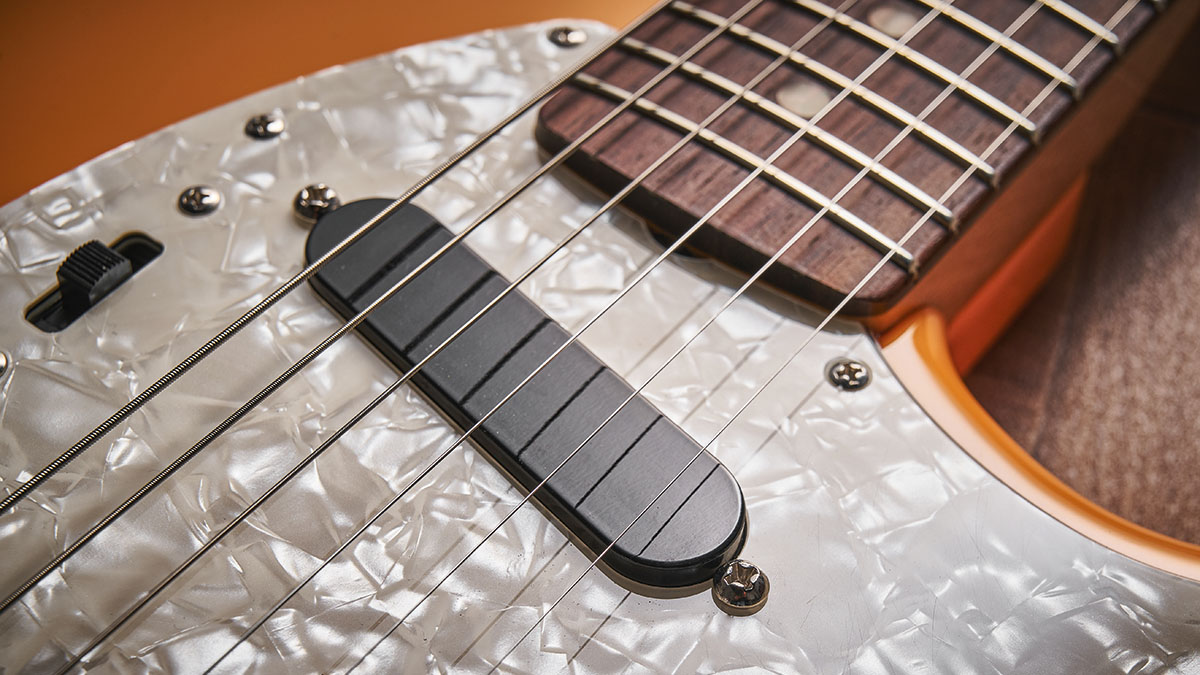
Feel & Sounds
While many contemporary offsets simply borrow the outline, there’s a lot more to these original recipes when it comes to their sounds. The Jazzmaster here is almost a shock after our reference Strats and Teles. It’s definitely a Fender voice, but it’s possibly excessively bright until you dial it in a little and pull back the metallic smash of the attack.
Pulling back the volume and tone certainly rounds things out a little and there’s some welcome depth to the attack, but it’s all underpinned by not only the seemingly shorter sustain (which adds to the plunk) but the original fingerboard radius – and those pretty small frets make things less fluid than we’re used to.
The mix, the only hum-cancelling position on the guitar, is probably worth the experience on its own: definitely more Tele-like, but the high-end detail, not to mention a few light shimmers from the vibrato and with some added lashings of reverb, transports us back in time in quite glorious fashion.
The rhythm circuit does nod towards the instrument’s name, pulling back those highs a little more on the neck pickup only – but lounge-smooth it ain’t.

Strapping on the Jaguar, it initially feels like a toy. We pretty much kept volume and tone full up and it’s certainly got a darker voicing that’s more Gibson-esque, if you like, but we have that different sustain and a fuller neck profile in higher positions, not to mention the slippery gloss feel of the fingerboard, which widen the differences.
Here, though, the rhythm circuit really hits the old-school jazz mark, whereas on the Jazzmaster it’s still a little scooped in the midrange in comparison.
The longer we play, the more the Jaguar works its magic, even though quick pickup changes require some dexterity and thought. If only we had that toggle switch! The extra ‘strangle’ switch is relatively subtle, too; it does clean up the low-end a little, but it seems more for occasional use than an essential feature.
Onto the Mustang, and strapping on this model is even more odd than the Jaguar because, in combination with the shorter scale, its smaller body and lighter weight enhance the toy-like feel. To be honest, though, although the pickups are far from hot, if you live in a Tele and Strat world then the voicing here is more familiar.

Selecting pickups is harder than on the Jaguar, and there’s plenty of chance you’ll accidentally mute the guitar or put the pickups out-of-phase. Still, while the sound is thinned, kick in something like an MXR Phase 90 and it’s a beautiful shimmery voice; with some blunderous fuzz or some even quite metal distortion, it has bags of attitude, too.
The more we play, the more we get used to the feel and scale length. We preferred it in that regard to the Jaguar, even though the Mustang’s vibrato is very different: a light waggle here brings fast pitch change and you really have to use it carefully unless you’re keen to alarm your audience and bandmates.
Also, if you lose the necessary Allen key, or worse the grub screw drops out (the only way to keep the arm in place), then you’ve got a problem.
Verdict
While spending time with this trio is definitely a time-warp jive, it reminds us just how ‘out-there’ these designs were at the time of their release. Now, at this Vintera II level, for the most part they’re clearly reproduced with keen attention to detail and none of the issues that can come with buying original vintage pieces. Any mods you choose to make or ‘improved’ aftermarket parts you add won’t affect your vintage investment, either.
Which one would we shoot for? Despite the improvements that the Jaguar brought, our sample certainly isn’t light in weight and the maple ’board won’t be to everyone’s taste in either looks or playability.
Then there’s the short scale to get used to, which, like the Mustang, does impart a rather toy-like feel to begin with. That said, its sounds are more than worth investigating.
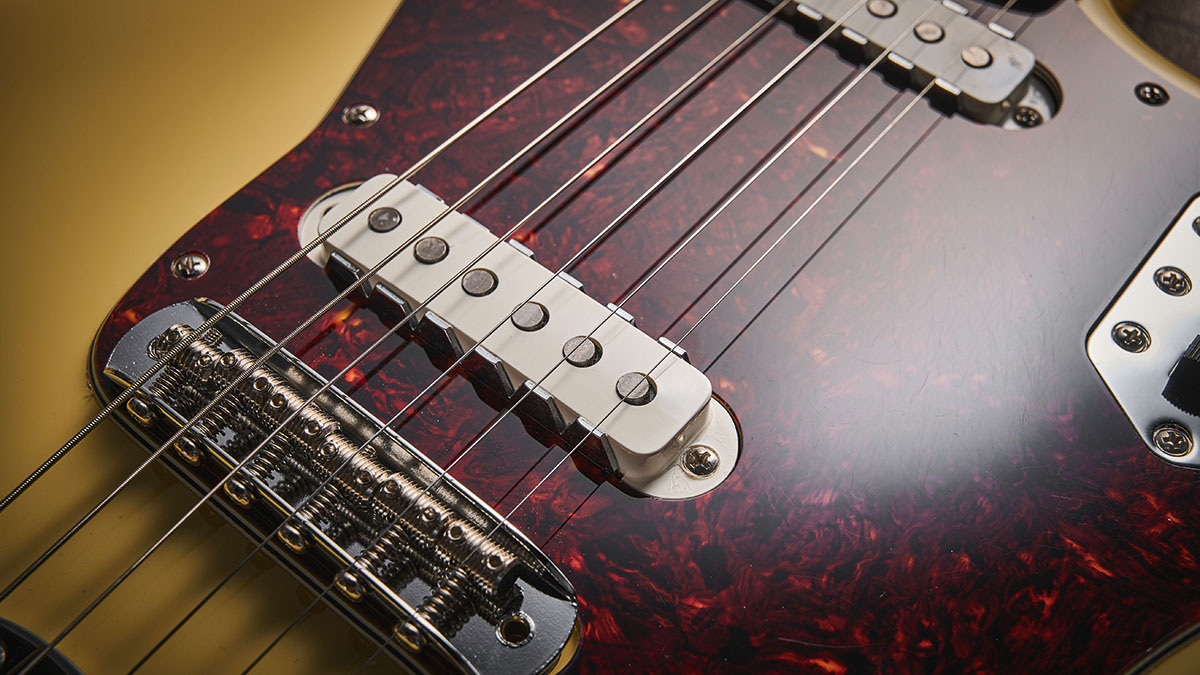
The full-scale Jazzmaster feels the most ‘normal’ in that regard. Even if you have no plans in place to use the ‘rhythm’ circuit, once you tame the high-end, well, there’s a reason why this guitar has eventually become quite a classic – it has a different voice and feel from your Tele and Strat.
And although the Mustang’s vibrato doesn’t have that classic smooth feel of the Jazzmaster/Jaguar, the more comfortable sounds with out-of-phase potential made this lightweight model get way more play time than we’d expected.
Specs
Fender Vintera II ’50s Jazzmaster
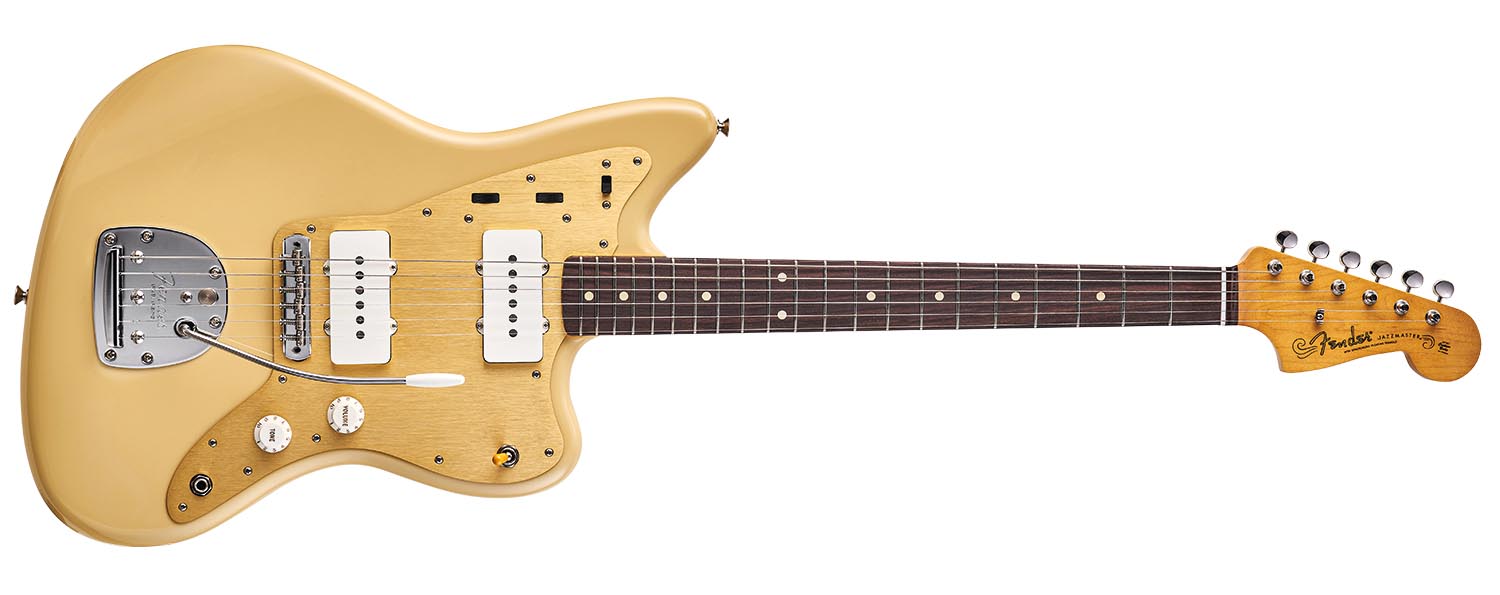
- PRICE: $1,249 / £1,149 (inc gigbag)
- ORIGIN: Mexico
- TYPE: Offset double-cutaway solidbody electric, bolt-on
- BODY: Alder
- NECK: Maple, late ’50s C shape, bolt-in
- SCALE LENGTH: 648mm (25.5”)
- NUT: Synthetic bone
- FINGERBOARD: Rosewood, white dot inlays, 184mm (7.25”) radius
- FRETS: 21, vintage tall
- HARDWARE: 6-saddle vintage-style bridge with vibrato tailpiece vintage-style tuners – nickel-plated
- STRING SPACING, BRIDGE: 54mm
- ELECTRICS: 2x vintage-style ’50s single-coil Jazzmaster pickups. Lead Circuit master volume, master tone and 3-way toggle pickup selector switch. Lead/Rhythm circuit slide switch. Rhythm circuit thumb-wheel controls for neck pickup volume and tone
- WEIGHT (kg/lb): 3.78/8.32
- LEFT-HANDERS: No
- FINISHES: Desert Sand (as reviewed), Sonic Blue – gloss polyester body, gloss urethane neck
Fender Vintera II ’70s Jaguar

- PRICE: $1,499 / £1,229 (inc gigbag)
- ORIGIN: Mexico
- TYPE: Offset double-cutaway solidbody electric, bolt-on
- BODY: Alder
- NECK: Maple, late ’70s C shape, bolt-in
- SCALE LENGTH: 610mm (24”)
- NUT: Synthetic bone
- FINGERBOARD: Bound maple, black block inlays, 184mm (7.25”) radius
- FRETS: 22, vintage tall
- HARDWARE: 6-saddle vintage-style bridge with vibrato tailpiece, vintage F-stamped tuners – nickel-plated
- STRING SPACING, BRIDGE: 54mm
- ELECTRICS: 2x vintage-style ’70s single-coil Jaguar pickups. Lead Circuit master volume, master tone and 3-way toggle pickup selector switch. Lead/Rhythm circuit slide switch plus individual pickup on/off slide switches and high-pass filter switch. Rhythm circuit thumb-wheel controls for neck pickup volume and tone
- WEIGHT (kg/lb): 4.04/8.89
- FINISHES: Vintage White (as reviewed), Black – gloss polyester body, gloss urethane neck
Fender Vintera II ’70s Competition Mustang

- PRICE: $1,149 / £1,049 (inc gigbag)
- ORIGIN: Mexico
- TYPE: Offset double-cutaway solidbody electric, bolt-on
- BODY: Mahogany back with maple top (w/ quilt maple veneer facing) and shallow violin carve
- NECK: Maple, early ’70s C shape, bolt-in
- SCALE LENGTH: 610mm (24”)
- NUT: Synthetic bone
- FINGERBOARD: Rosewood, white dot inlays, 184mm (7.25”) radius
- FRETS: 22, vintage tall
- HARDWARE: 6-saddle vintage-style Mustang vibrato tailpiece, vintage F-stamped tuners – nickel-plated
- STRING SPACING, BRIDGE: 55mm
- ELECTRICS: 2x vintage-style ’70s single-coil Mustang pickups. Individual pickup on/off switches, master volume and tone
- WEIGHT (kg/lb): 3.66/8.05
- LEFT-HANDERS: Not this model
- FINISHES: Competition Orange (as reviewed), Competition Burgundy – gloss polyester body, gloss urethane neck
- CONTACT: Fender







